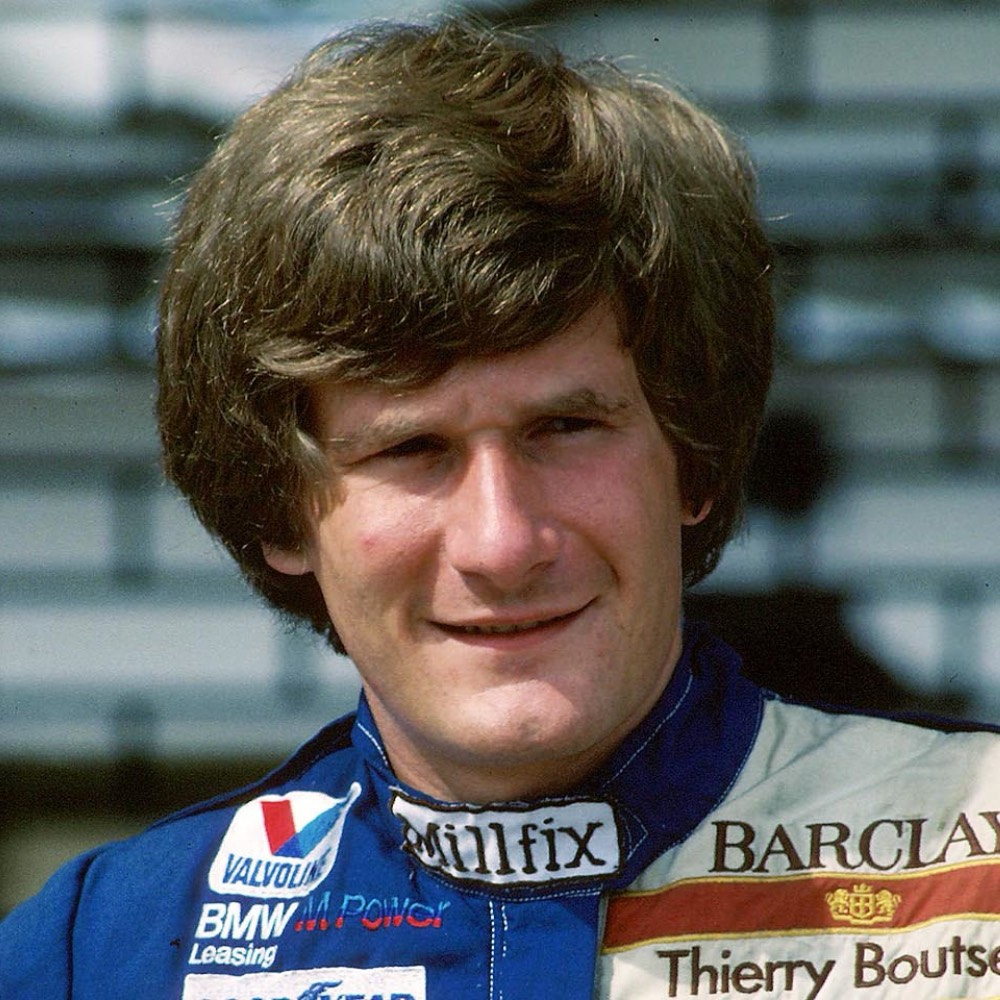
Thierry Boutsen
Career Statistics
Biography
Thierry Marc Boutsen (born 13 July 1957) is a Belgian former racing driver who competed in Formula One from 1983 to 1993, achieving three Grand Prix victories and 15 podium finishes during a 10-year career that established him as one of Belgium's most successful Formula One drivers. Born in Brussels, Belgium, Boutsen progressed through the junior single-seater categories during the late 1970s and early 1980s, demonstrating the consistency and racecraft that would characterize his Formula One career. His progression culminated in Formula 2, where strong performances caught the attention of Formula One teams, leading to his Grand Prix debut in 1983. Boutsen entered Formula One with the Arrows team in 1983, beginning a steady if unspectacular debut season that established him as a reliable points scorer.
He remained with Arrows through 1986, consistently delivering solid results and demonstrating particular skill in wet conditions—a talent that would prove crucial to his later success. During these years at Arrows, Boutsen established his reputation as a driver who maximized his equipment, regularly outperforming the car's theoretical capabilities through smooth driving style and excellent racecraft. For 1987, Boutsen made a significant career move to the Benetton team, which offered more competitive machinery and better prospects for podium finishes. Over two seasons with Benetton (1987-1988), Boutsen scored multiple podium finishes and established himself among Formula One's second tier of drivers—consistently competitive for points and occasional podiums, though not yet challenging for victories.
His performances at Benetton demonstrated he possessed the speed and racecraft necessary for Grand Prix success, requiring only more competitive machinery to challenge for wins. That opportunity arrived for 1989 when Boutsen secured a coveted seat at Williams, replacing Nigel Mansell alongside Riccardo Patrese. Williams had won the Constructor's Championship in 1987 and remained one of Formula One's top teams, providing Boutsen with the best equipment of his career. His first season at Williams in 1989 proved to be his breakthrough campaign.
After several strong points finishes and podiums early in the season, Boutsen scored his maiden Formula One victory at the 1989 Canadian Grand Prix in Montreal. The race was held in torrentially wet conditions, and Boutsen drove superbly, benefiting when Ayrton Senna's McLaren suffered a late engine failure while leading. Boutsen inherited the lead and controlled the final laps to secure his first win, vindicating Williams' faith in hiring him. Just months later at the 1989 Australian Grand Prix in Adelaide, Boutsen scored his second victory of the season, again in rain-soaked conditions.
The race was held in torrential rain, and Boutsen once again demonstrated his exceptional wet-weather skills, controlling the race from the front to secure a dominant victory. Two wins in his first season with Williams, both in treacherous wet conditions, established Boutsen's reputation as one of Formula One's finest rain masters. Boutsen's success continued into 1990, when he scored his third and final Formula One victory at the Hungarian Grand Prix at the Hungaroring. This victory was particularly impressive as it came in completely dry conditions, proving Boutsen could win in any circumstances, not just wet weather.
Starting from his first-ever pole position, Boutsen dominated the race, holding off sustained pressure from Alessandro Nannini's Benetton and Ayrton Senna's McLaren to secure a lights-to-flag victory. The Hungarian Grand Prix win demonstrated Boutsen at his absolute peak, combining qualifying pace with race management and defensive driving to defeat two of the era's finest drivers. However, despite his three victories in 1989-1990, Boutsen never seriously challenged for the World Championship, as his Williams teammate Patrese and McLaren's Senna and Prost proved more consistently quick. Boutsen remained with Williams through 1990, but for 1991 the team replaced him with Nigel Mansell, who returned to partner Patrese in what would become Williams' dominant FW14 and FW14B cars.
This decision proved correct from Williams' perspective, as Mansell won the 1992 World Championship, though it was disappointing for Boutsen to lose his seat just as Williams developed their most competitive cars. After leaving Williams, Boutsen spent his final three Formula One seasons (1991-1993) with the Ligier team, which offered significantly less competitive machinery than the Williams he'd departed. While Boutsen delivered solid performances and maximized Ligier's limited potential, podiums became rare and victories impossible. He retired from Formula One at the end of 1993, having competed in 164 Grands Prix, scoring three victories, 15 podiums, and one pole position across 10 seasons.
His three Grand Prix victories remain a proud achievement, placing Boutsen among Belgium's most successful Formula One drivers alongside the great Jacky Ickx. After retiring from Formula One, Boutsen competed in various categories including touring cars and sports car racing, before stepping back from full-time competition. He later became involved in driver management and motorsport commercial activities, establishing Boutsen Collection—a prestigious dealership specializing in historic racing cars and supercars based in Monaco. Throughout his post-racing career, Boutsen remained a respected figure in motorsport, known for his three Grand Prix victories, his exceptional wet-weather driving, and his decade-long Formula One career that represented Belgium with distinction during an era when the nation produced several top-level racing drivers.
Thierry Boutsen's legacy rests on solid achievement—three Grand Prix victories earned through exceptional wet-weather skill and one brilliant dry-weather drive in Hungary, making him one of the most successful Belgian Formula One drivers in the sport's history.